Posts (page 28)
-
 5 min readIn Jinja2, attribute access errors occur when the template tries to access an attribute or method that does not exist in the provided object. To handle these errors, you can use the default filter or the default attribute in Jinja templates.The default filter allows you to provide a default value in case the attribute access fails. For example, {{ object.attribute | default('N/A') }} will display 'N/A' if the attribute is not found in the object.
5 min readIn Jinja2, attribute access errors occur when the template tries to access an attribute or method that does not exist in the provided object. To handle these errors, you can use the default filter or the default attribute in Jinja templates.The default filter allows you to provide a default value in case the attribute access fails. For example, {{ object.attribute | default('N/A') }} will display 'N/A' if the attribute is not found in the object.
-
 3 min readTo remove part of a string in PowerShell, you can use the Substring() method. This method allows you to extract a portion of a string based on the specified start index and length. You can also use the Replace() method to replace a specific substring with another string. Additionally, you can use regular expressions and the -replace operator to remove specific patterns from a string. These methods provide a flexible way to manipulate strings in PowerShell.
3 min readTo remove part of a string in PowerShell, you can use the Substring() method. This method allows you to extract a portion of a string based on the specified start index and length. You can also use the Replace() method to replace a specific substring with another string. Additionally, you can use regular expressions and the -replace operator to remove specific patterns from a string. These methods provide a flexible way to manipulate strings in PowerShell.
-
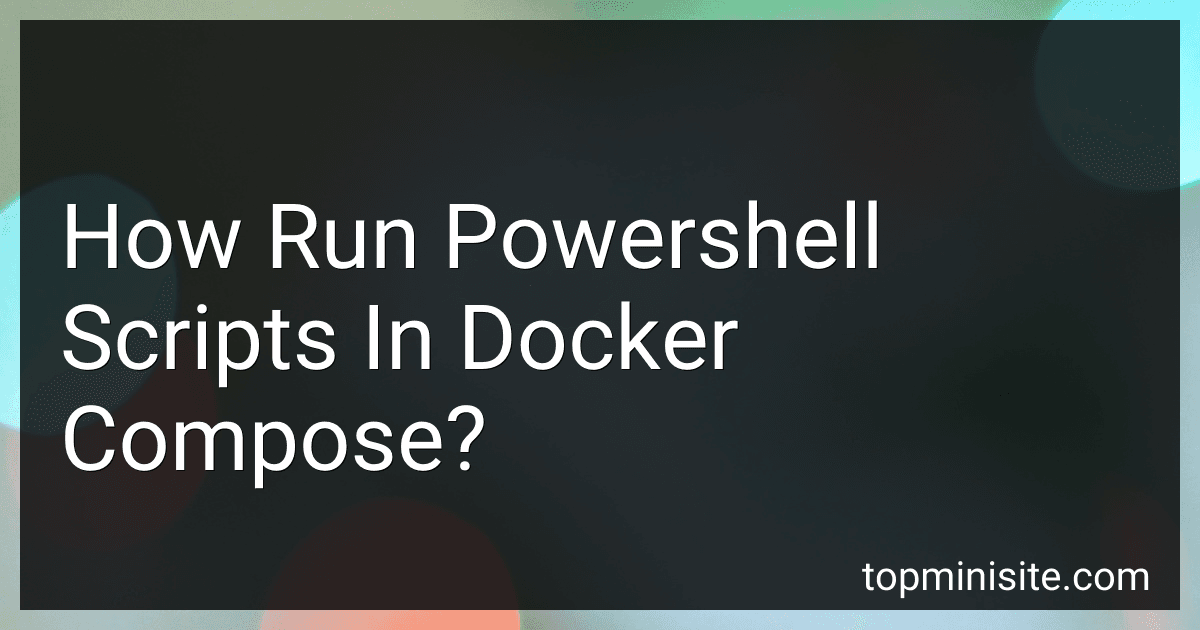 3 min readTo run PowerShell scripts in Docker Compose, you can use the docker-compose.yml file to define your services and specify the command to run the PowerShell script.Within the docker-compose.yml file, you can define a service that uses a PowerShell base image or a custom image that has PowerShell installed. Then, in the command section of the service definition, you can specify the path to the PowerShell script you want to execute.
3 min readTo run PowerShell scripts in Docker Compose, you can use the docker-compose.yml file to define your services and specify the command to run the PowerShell script.Within the docker-compose.yml file, you can define a service that uses a PowerShell base image or a custom image that has PowerShell installed. Then, in the command section of the service definition, you can specify the path to the PowerShell script you want to execute.
-
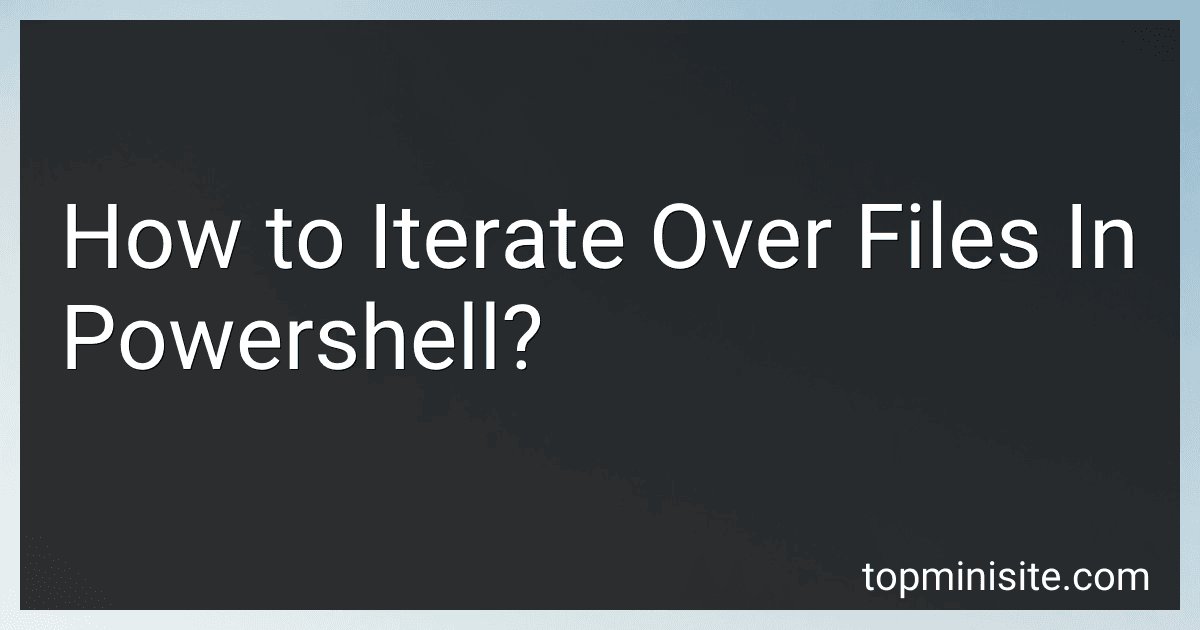 6 min readIn PowerShell, you can iterate over files using the Get-ChildItem cmdlet, which allows you to retrieve a list of files and directories in a specified location. You can then use a foreach loop to iterate over each file in the list and perform actions on each file, such as displaying information or processing the file in some way.
6 min readIn PowerShell, you can iterate over files using the Get-ChildItem cmdlet, which allows you to retrieve a list of files and directories in a specified location. You can then use a foreach loop to iterate over each file in the list and perform actions on each file, such as displaying information or processing the file in some way.
-
 3 min readTo sort descending using PowerShell called from C#, you can use the Sort-Object cmdlet in PowerShell. This cmdlet allows you to sort objects in a collection based on specified properties in either ascending or descending order.In your C# code, you can use PowerShell class from the System.Management.Automation namespace to run PowerShell commands.
3 min readTo sort descending using PowerShell called from C#, you can use the Sort-Object cmdlet in PowerShell. This cmdlet allows you to sort objects in a collection based on specified properties in either ascending or descending order.In your C# code, you can use PowerShell class from the System.Management.Automation namespace to run PowerShell commands.
-
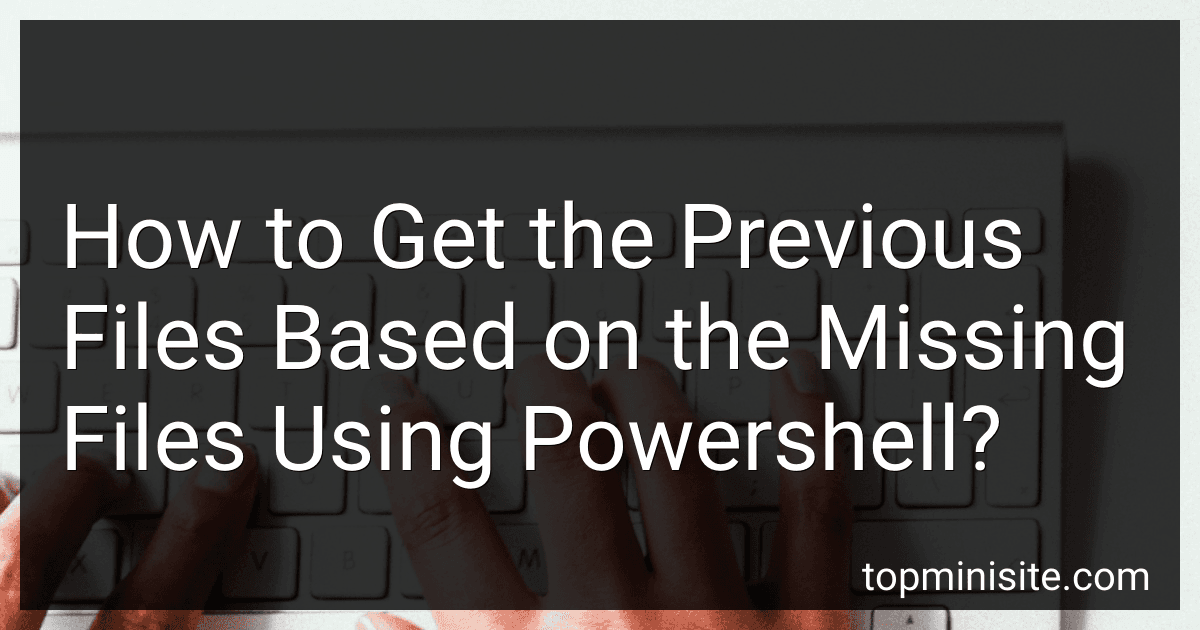 5 min readTo get the previous files based on the missing files using PowerShell, you can compare the list of missing files with the list of all files in a directory. You can use the Get-ChildItem cmdlet to list all files in the directory and then compare it with the list of missing files. By doing this, you can identify the previous files that are present in the directory but not in the list of missing files. This will help you to retrieve the previous files that might be related to the missing files.
5 min readTo get the previous files based on the missing files using PowerShell, you can compare the list of missing files with the list of all files in a directory. You can use the Get-ChildItem cmdlet to list all files in the directory and then compare it with the list of missing files. By doing this, you can identify the previous files that are present in the directory but not in the list of missing files. This will help you to retrieve the previous files that might be related to the missing files.
-
 4 min readWhen working with Active Directory in PowerShell, there may be instances where exceptions occur while performing operations. To handle these exceptions, you can use try-catch blocks in your PowerShell scripts.Within the try block, you can include the code that may potentially raise an exception. If an exception is thrown, the catch block will then be executed, allowing you to handle the exception in a controlled manner.
4 min readWhen working with Active Directory in PowerShell, there may be instances where exceptions occur while performing operations. To handle these exceptions, you can use try-catch blocks in your PowerShell scripts.Within the try block, you can include the code that may potentially raise an exception. If an exception is thrown, the catch block will then be executed, allowing you to handle the exception in a controlled manner.
-
 6 min readTo pass a variable from PowerShell to a batch variable, you can use the following syntax:In PowerShell: $myVariable = "value" $env:myBatchVariable = $myVariableIn Batch: echo %myBatchVariable%[rating:69124b1f-7719-4c02-b18b-990e9c9271ea]How to pass an array variable from PowerShell to a batch script?You can pass an array variable from PowerShell to a batch script by converting the array into a string and then passing it as a command line argument to the batch script.
6 min readTo pass a variable from PowerShell to a batch variable, you can use the following syntax:In PowerShell: $myVariable = "value" $env:myBatchVariable = $myVariableIn Batch: echo %myBatchVariable%[rating:69124b1f-7719-4c02-b18b-990e9c9271ea]How to pass an array variable from PowerShell to a batch script?You can pass an array variable from PowerShell to a batch script by converting the array into a string and then passing it as a command line argument to the batch script.
-
 2 min readTo translate a curl command into PowerShell, you can use the Invoke-RestMethod cmdlet. This cmdlet allows you to send HTTP and HTTPS requests to a web service and receive the response. You can specify the method (GET, POST, PUT, DELETE, etc.), headers, body, and other parameters in the cmdlet. This can help you achieve similar functionality as the curl command in PowerShell.[rating:69124b1f-7719-4c02-b18b-990e9c9271ea]What is the command for disabling redirects when using curl in PowerShell.
2 min readTo translate a curl command into PowerShell, you can use the Invoke-RestMethod cmdlet. This cmdlet allows you to send HTTP and HTTPS requests to a web service and receive the response. You can specify the method (GET, POST, PUT, DELETE, etc.), headers, body, and other parameters in the cmdlet. This can help you achieve similar functionality as the curl command in PowerShell.[rating:69124b1f-7719-4c02-b18b-990e9c9271ea]What is the command for disabling redirects when using curl in PowerShell.
-
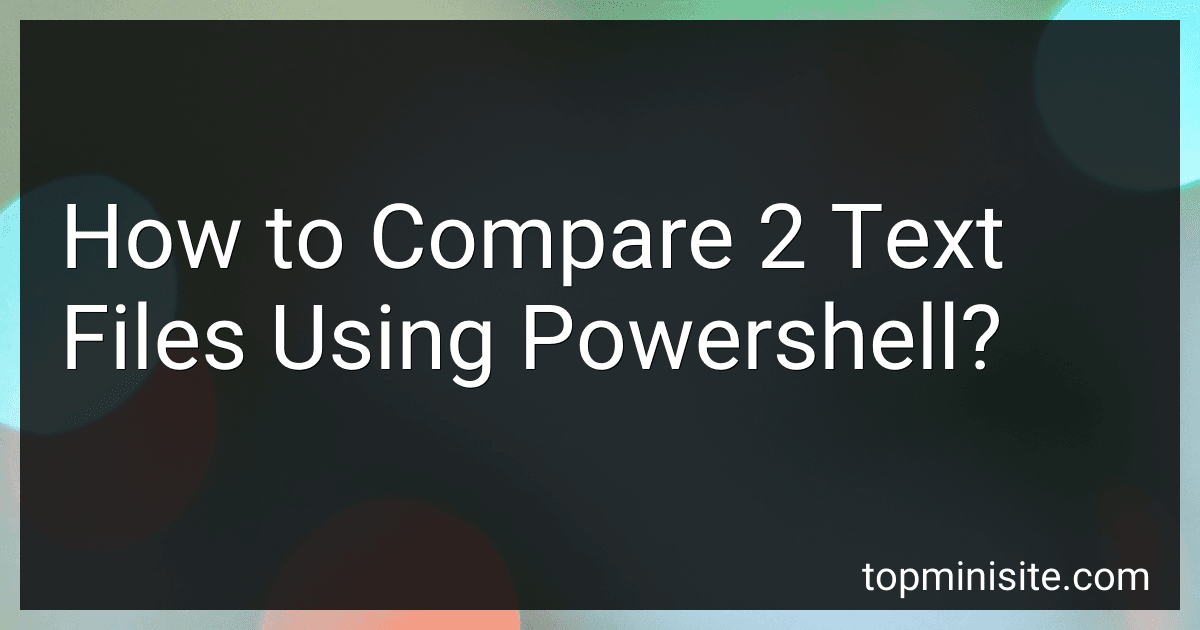 4 min readTo compare two text files using PowerShell, you can use the Compare-Object cmdlet. This cmdlet allows you to compare two sets of objects and indicate differences between them. To compare two text files, you can use the following command:Compare-Object $(Get-Content file1.txt) $(Get-Content file2.txt)This command will compare the content of file1.txt and file2.txt line by line and show the differences between them.
4 min readTo compare two text files using PowerShell, you can use the Compare-Object cmdlet. This cmdlet allows you to compare two sets of objects and indicate differences between them. To compare two text files, you can use the following command:Compare-Object $(Get-Content file1.txt) $(Get-Content file2.txt)This command will compare the content of file1.txt and file2.txt line by line and show the differences between them.
-
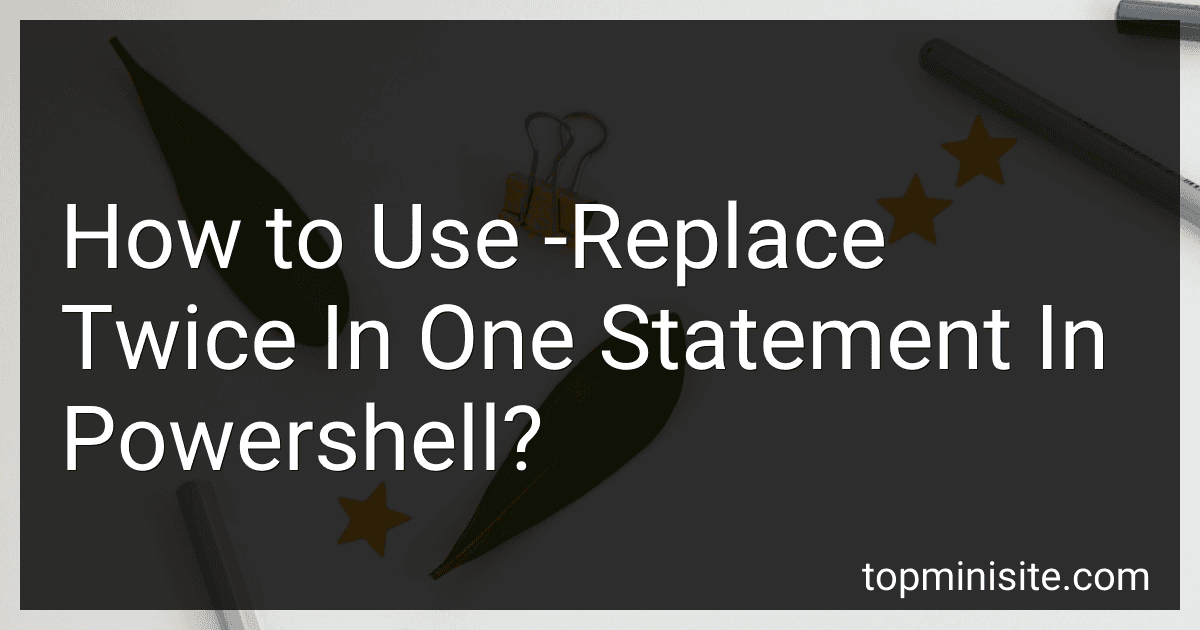 4 min readTo use -replace twice in one statement in PowerShell, you can simply separate the replacement operations with a semicolon. For example: $text = "Hello world 123" $text -replace "Hello", "Hi" -replace "123", "456" In this example, we are first replacing "Hello" with "Hi" and then replacing "123" with "456" in the variable $text. The semicolon allows you to chain multiple -replace operations in a single statement.
4 min readTo use -replace twice in one statement in PowerShell, you can simply separate the replacement operations with a semicolon. For example: $text = "Hello world 123" $text -replace "Hello", "Hi" -replace "123", "456" In this example, we are first replacing "Hello" with "Hi" and then replacing "123" with "456" in the variable $text. The semicolon allows you to chain multiple -replace operations in a single statement.
-
 5 min readTo iterate through a CSV file using PowerShell, you can use the Import-Csv cmdlet to read the contents of the file and then loop through each row in the CSV data. Here is an example of how you can achieve this:Use the Import-Csv cmdlet to read the CSV file and store it in a variable: $csvData = Import-Csv -Path "C:\path\to\file.
5 min readTo iterate through a CSV file using PowerShell, you can use the Import-Csv cmdlet to read the contents of the file and then loop through each row in the CSV data. Here is an example of how you can achieve this:Use the Import-Csv cmdlet to read the CSV file and store it in a variable: $csvData = Import-Csv -Path "C:\path\to\file.